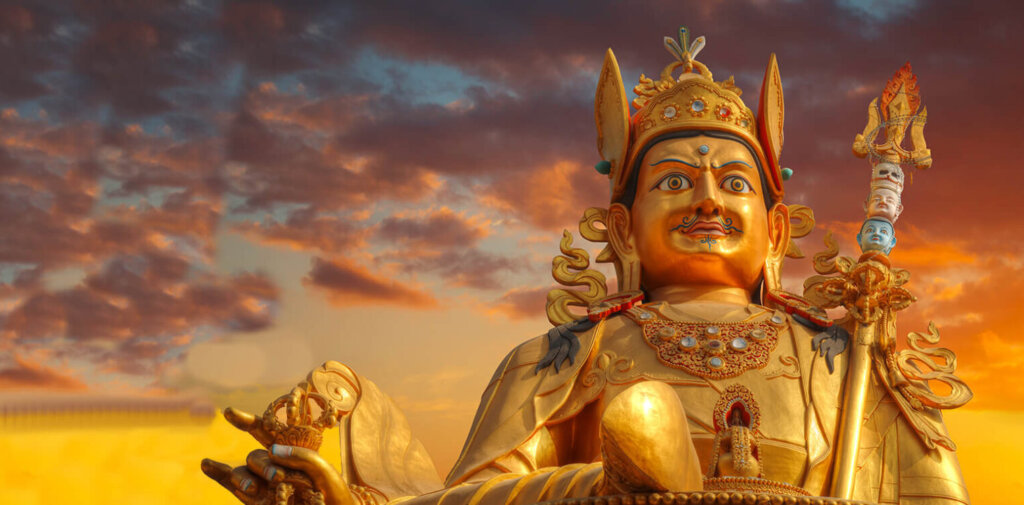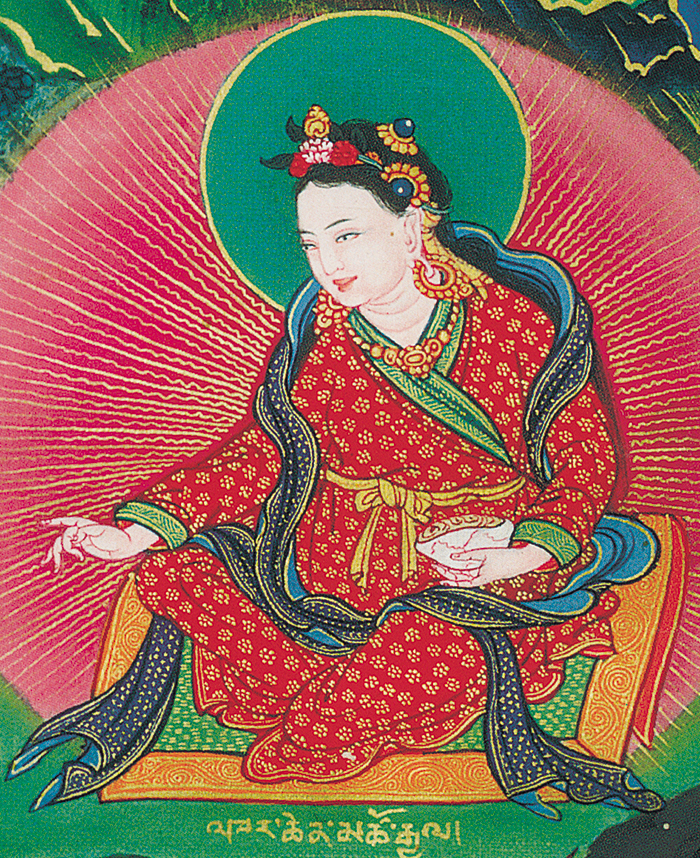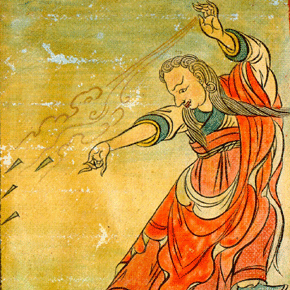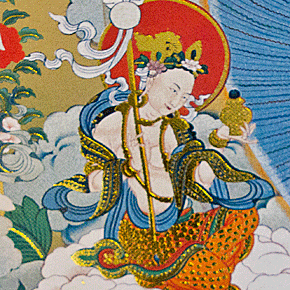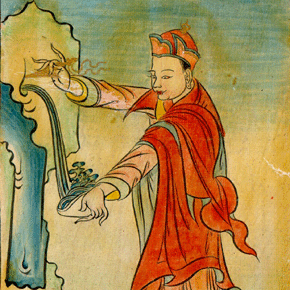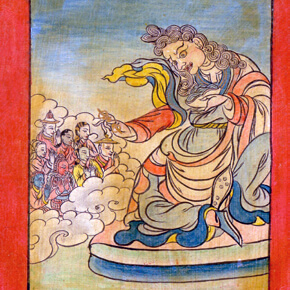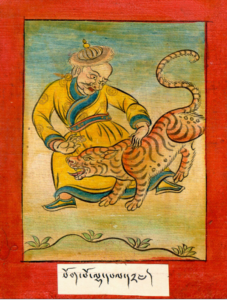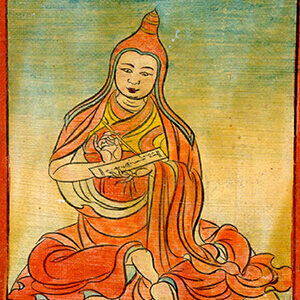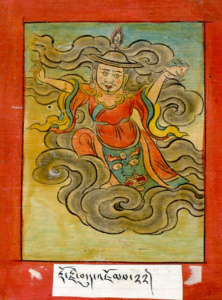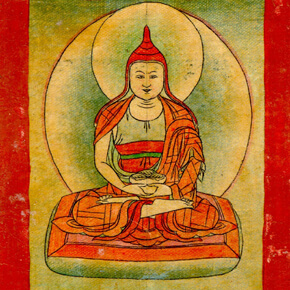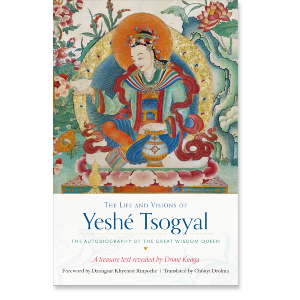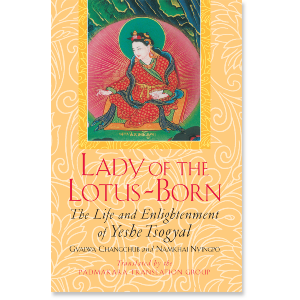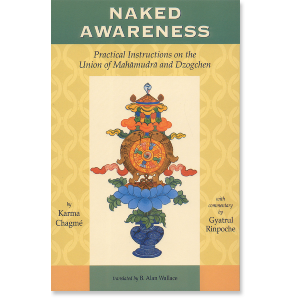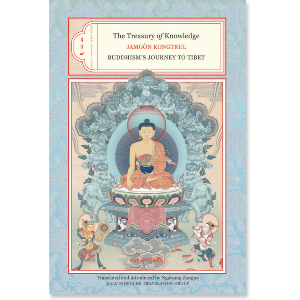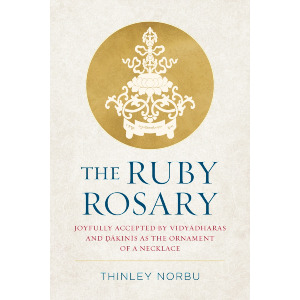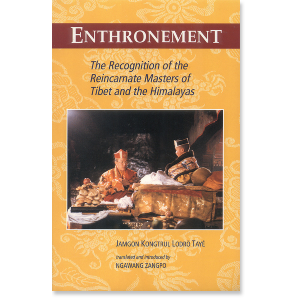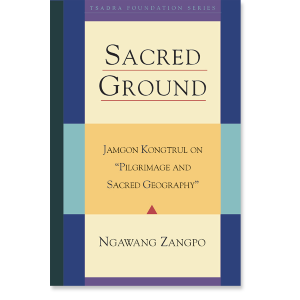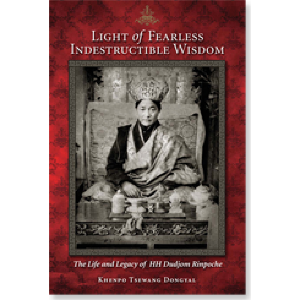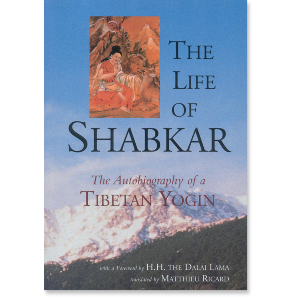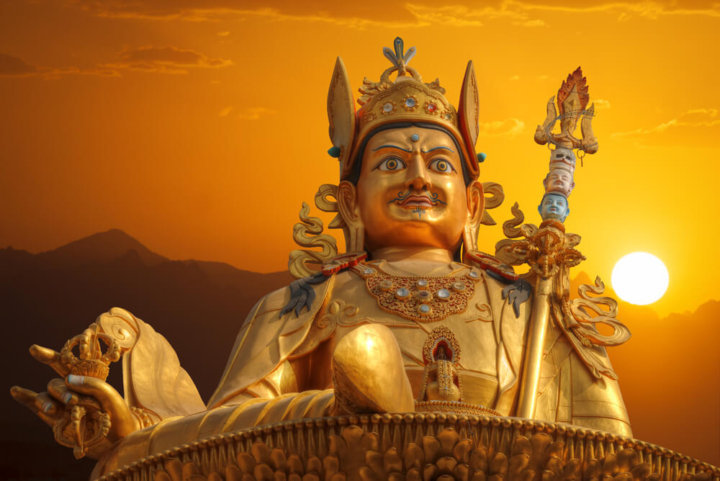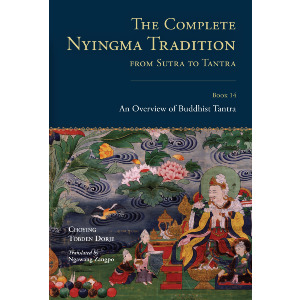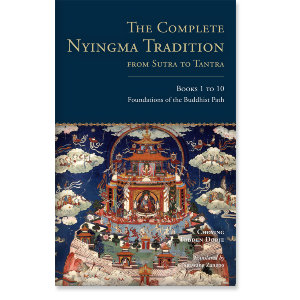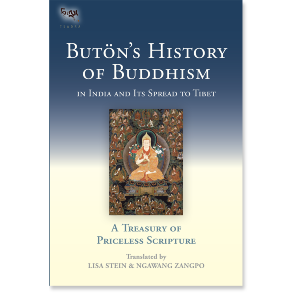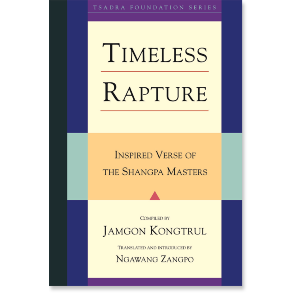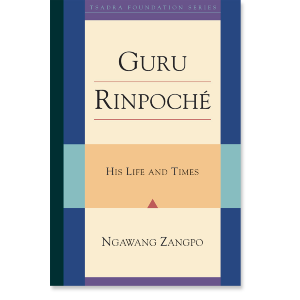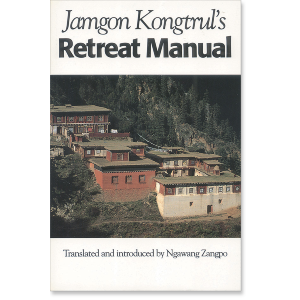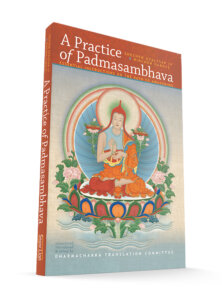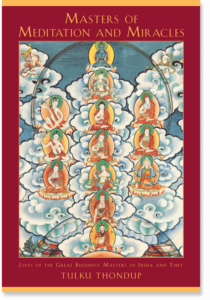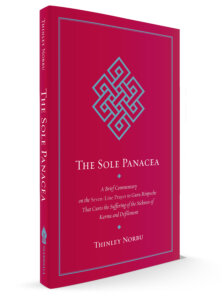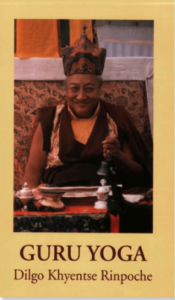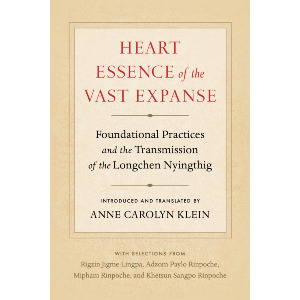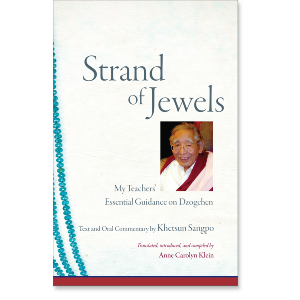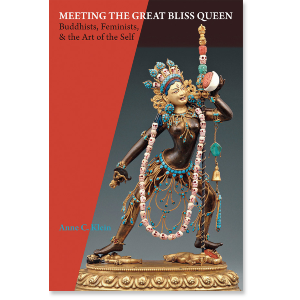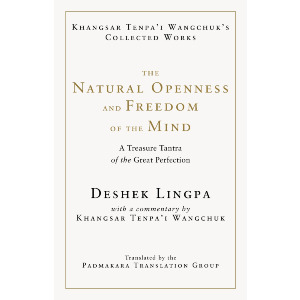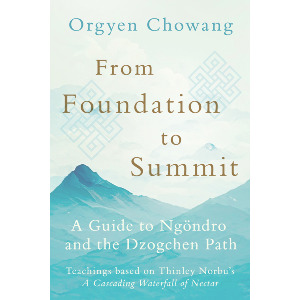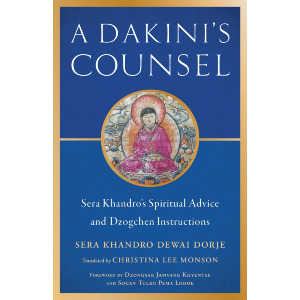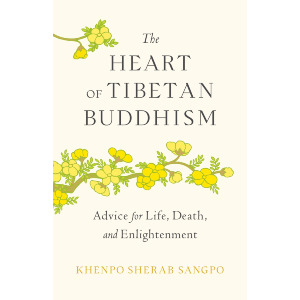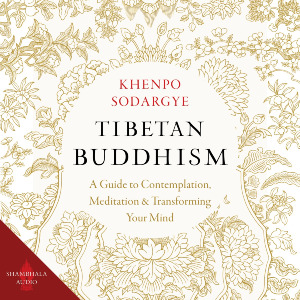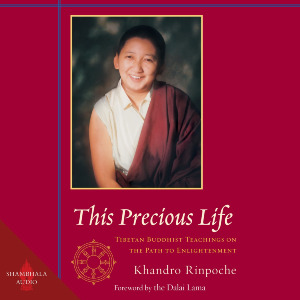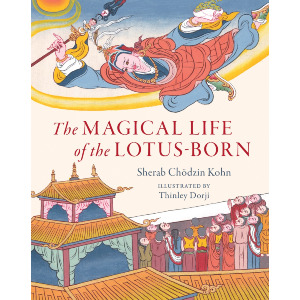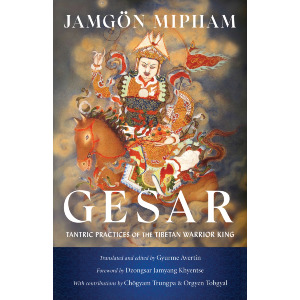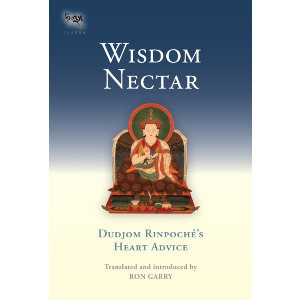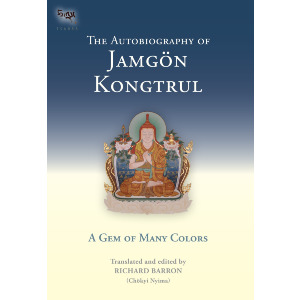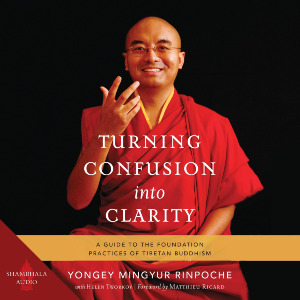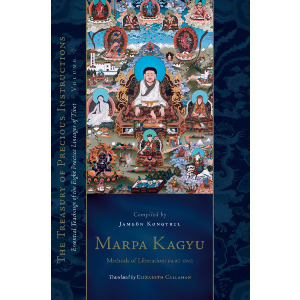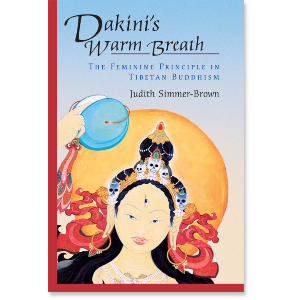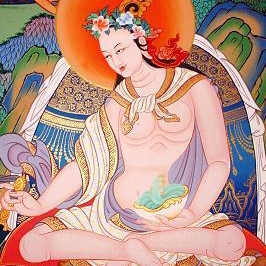

Yeshe Tsogyal
Yeshe Tsogyal is perhaps one of the most well-known female practitioners of Tibetan Buddhism. A beloved disciple and partner of Padmasambhava, Tsogyal achieved great realization and became a teacher herself.
Yeshe Tsogyal
-
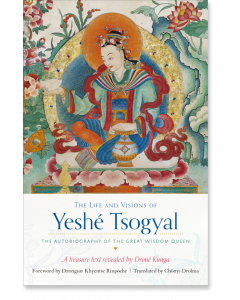 The Life and Visions of Yeshe Tsogyal$24.95- Paperback
The Life and Visions of Yeshe Tsogyal$24.95- PaperbackBy Drime Kunga
Foreword by Dzongsar Jamyang Khyentse
By Yeshe Tsogyal
Translated by Chonyi Drolma
GUIDES
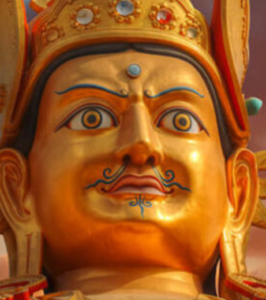
Tibetan Masters of the 8th Century

Masters of the 8th Century
Tibetan Masters of the Eighth Century
The eighth century was an incredible flouring of the Dharma in Tibet with special thanks to Guru Rinpoche Padmasambhava, King Trisong Deutsen, and Shantarakshita. The figures in this section includes some of Guru Rinpoche's famed 25 disciples. The full list is as follows:
King Trisong Detsen, Namkhe Nyingpo, Nubchen Sangye Yeshe, Gyalwa Chogyang, Yeshe Tsogyal, Palgyi Yeshe, Langchen Palgyi Senge, Vairotsana, Nyak Jñānakumāra, Yudra Nyingpo, Nanam Dorje Dudjom, Yeshe Yang, Sogpo Lhapal, Nanam Zhang Yeshe De, Kharchen Palgyi Wangchuk, Denma Tsemen, Kawa Paltsek, Shupu Palgyi Senge, Gyalwe Lodrö, Drogben Khyeuchung Lotsawa, Odren Palgyi Wangchuk, Ma Rinchen Chok, Lhalung Palgyi Dorje, Langdro Könchok Jungne, Lasum Gyalwa Jangchub.
We continue to add Reader Guides to this section.
Guru Rinpoche, Padmasambhava
8th century
The great master from India whose centrality to Tibetan Buddhism through his establishing Buddhism in Tibet and his legacy of teachings that continues to unfold cannot be overstated.
Yeshe Tsogyal
8th century
The great princess turned queen who, as a supreme disciple of Guru Rinpoche, was possibly the first person to achieve liberation in Tibet.
Langdro Konchok Jungne
8th century
Also known as Langdro Lotsawa, he was minister in the court of King Trisong Deutsen.
Lang Pelgyi Senge
8th century
Also known as Lhalung Pelgyi Senge, should not be confused with another Pelgyi Senge who was his contemporary.
Sokpo Pelgyi Yeshe
8th century
Also known as Sokpo Lhapal, was a direct disciple of both Guru Rinpoche and Nyak Jnanakumara and then later became the teacher of Nupchen Sangye Yeshe.
Denma Tsemang
8th century
Another of Guru Rinpoche's 25 chief disciples, famed for his calligraphy and, later, his translation skills and of course his practice.
Nanam Dorje Dudjom
8th century
A minister to King Trisong Detsen while still a young man, he was part of the party that invited Padmasambhava to Tibet.
Kawa Peltsak
8th century
Another of Guru Rinpoche's 25 chief disciples, famed for his translations , including Shantideva's Bodhicharyavatara.
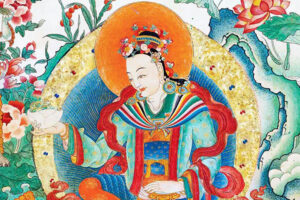
Yeshé Tsogyal: Mother of the Victorious Ones
In this chapter from The Life and Visions of Yeshé Tsogyal, Acharya Judith Simmer-Brown explains some of the travails Yeshé Tsogyal went through, including a contested betrothal and a journey through hell, to become the mother of the buddhas, accomplished in faith, courage, and kindness.
by Acharya Judith Simmer-Brown
In 1959, my root guru, Vidyadhara Chögyam Trungpa Rinpoche, narrowly escaped with his life in the midst of fleeing Tibet with a large group of devotees. He briefly found refuge in the hidden land of Pema Kö, and there in a natural rock cave, he spontaneously sang a long song of thanksgiving to Yeshé Tsogyal with a repeating refrain:
Mother of all the victorious ones, so very kind Ama Tsogyal,
Refuge for this life and on, very kind mother, I miss you.
This little child, thinking of Ama, simply can’t bear it at all—
Ama, a la la, please truly show me a clear sign of your blessings.
This haunting and penetrating song speaks of Yeshé Tsogyal as Ama, the Mother of the Victorious Ones, the buddhas. This image of mother captures multiple aspects of Yeshé Tsogyal’s life and its importance for all Tibetan Buddhist practitioners. She provides ancestral and spiritual lineage, wisdom realization, and protection for all who faithfully follow the path.
When Trungpa Rinpoche supplicated Yeshé Tsogyal, he tapped into the powerful current of blessings that flows through her ancestral and spiritual lineages. Yeshé Tsogyal is called “Mother of the Victorious Ones” to signify that symbolically she is an emanation of Prajnaparamita herself, the realization that all phenomena are unborn, unproduced, and without end. This emblematic teaching is the essence of all Buddhism; realization of this nondual truth is said to completely transform the practitioner’s experience and journey, and to activate the inherent buddhahood within. Realization of emptiness is called the “ultimate shunyata protection” in Mahayana Buddhism, because when the true nature of phenomena is known, conventional dangers and worries are seen as dreamlike apparitions, and skillful determinations of the path ahead become clear.
But more than this, Rinpoche tied himself to the guru lineages of Guru Rinpoche and the Nyingma, to the deepest realizations of Tibet’s spiritual teachings from the terma lineages, to the sacred land of Tibet itself, and to the intrepid faithfulness of the Tibetan people in the face of adversity and tribulation. Yeshé Tsogyal represents all of these aspects, as she was likely the very first Tibetan to attain enlightenment, and as a devoted disciple of Guru Rinpoche, she became the progenitor of the entire tradition of realization of the yogic practices of Tibet. She is the most famous dakini, a powerful female emblem of the ultimate realization joining the sacredness of the body, both female and male; the profound meeting point of body and mind in meditation; the visionary realm of ritual practice; and the empty, spacious qualities of mind itself.
Dakinis became symbols of realization in Tibetan tantra and, as visionary beings, preside over the gates of wisdom for practitioners to come. Yeshé Tsogyal is universally recognized as Queen of the Dakinis.
Evidence that Yeshé Tsogyal was a historical woman, a principal disciple of Guru Rinpoche, living from 757–817 CE, grounds the rich lore of her life example for contemporary women practitioners. Accounts of her life detail the specific obstacles she faced as a woman—manipulated by parents with marital plans to cement political alliances, vied over by royal suitors because of her noble line, assailed by outlaws on retreat, heckled by would-be patrons, and tested by teachers regarding her intentions and depth of realization. Throughout her journey, she herself questions her aptitude even while remaining true to her practice and her guru’s instructions. Her deep faith and stamina in the practice provide tremendous inspiration for practitioners in the intervening centuries, as her enlightenment was not granted by miraculous means. She did it the hard way; she earned it.
As Guru Rinpoche’s closest disciple, she is said to be transcriber for his treasure teachings, using a lock of her own hair to calligraph in the secret dakini code, decipherable only to the most worthy of tertöns. These treasure texts, rediscovered at auspicious times throughout Tibetan history, prove their profundity by their skillful addressing of changing times, demonstrating the “fresh warm breath” of authentic teachings. This pivotal role has engraved Yeshé Tsogyal into the hearts of Tibetans as the enduring mother of realization. At her death, Yeshé Tsogyal vows that she will continuously respond to supplications for protection, blessing, and realization into the future, establishing her as an enduring, timeless figure in the Tibetan imagination. There have been myriad emanations of her throughout Tibetan history, and relics of hair, dakini script, articles of clothing, and ritual implements have been discovered across a broad landscape. To this day, she appears in dreams and visions, offering encouragement, advice, and prophecy to those who supplicate her. From this perspective, Yeshé Tsogyal adds lineage authority to her enduring presence for Tibetan Buddhist practitioners.
In this context, the publication of a new biography of Yeshé Tsogyal, revealed by Drimé Kunga, is a joyous occasion. Tracing the journey of the Queen of Dakinis, the biography has all the classic elements of a namthar, from her miraculous birth, her contested betrothal, and her spiritual journey fraught with obstacles and their resolution, transmissions and teachings, and their realization.
There are three distinctive elements in this biography that will provide fresh perspective about the life of Yeshé Tsogyal. First, there is no mention of the Tibetan emperor Trisong Detsen, often listed as her husband, in the Secret Biography. The account of her contested betrothal proceeds in tremendous detail, with arguments presented by her family and various members of the court, with Yeshé Tsogyal’s rejoinder, insisting that she only wished a life of practice and retreat. The agonizing betrothal drama encompasses forty percent of the entire biography, with endless scenes of abduction, beatings, unsuccessful seductions, the princess’s bribery of her entire retinue with her dowry, and fruitless escapes. In a final desperate scene, the princess prays for a protector who could provide her sanctuary, and a white-colored man with his hair knotted around a crystal, holding a turquoise vase, appears to her and praises her faith and commitment. Declaring himself to be Guru Rinpoche, he offers to accompany her, and presents her with a jeweled ring, asking her to hold him doubtlessly on the crown of her head, promising that the court and kingdom will no longer be able to see her. Together they fly to a sacred charnel ground called Samyé Chimpu, a powerful place for tantric practice. To protect the frustrated royals from further violence, Guru Rinpoche furnishes two cloned princesses to substitute for Tsogyal, who delight their respective kingdoms.
The second distinctive contribution to Yeshé Tsogyal’s biography comes in the form of a detailed visionary journey to Oddiyana during the twelve years of her solitary retreat in Samyé Chimpu charnel ground. This journey exposes her to kingdoms and beings both virtuous and despicable. She is tested on her commitments, her prudery and squeamishness, and her courage, and given specific tasks to fulfill and practices to complete. One of the most striking accounts evokes the famous jataka tale from the Buddha’s previous life, in which the princess offers herself as food for a tigress and her eighteen cubs that are starving, dehydrated, and close to death. As the princess hacks her own body to pieces as an offering, the tigress smiles in admiration and heals her wounds, nursing her back to health in gratitude. This powerful act of compassion accelerates Tsogyal’s spiritual progress and emboldens her in facing the many challenges in Oddiyana.
Third, at the point when Yeshé Tsogyal is about to become enlightened, she is challenged by a wrathful apparition, who asks if she is actually able to help anyone. He sends her to the hell realms to test her realization, and suggests that she especially liberate an evil official named Shanti, who had posed many obstacles in her path. The biography details her descent through the hell realms, her witnessing of the tortures of many beings, her practice for beings in the Hell of Endless Torment, and her liberation of those beings, including Shanti. This final act accomplishes her enlightenment, earns her the name Victorious Ocean of Wisdom, and brings the following praises from Guru Rinpoche:
You are a fully qualified dakini
And the mother who gives life
to all triumphant buddhas.
Yours is the great force of all buddhas,
As the motherly loving protector
Of all beings of the six realms.
My own qualities as Lotus-Born
Don’t come from me—
They come from you.
In these words, this biography seals her legacy as Mother of the Victorious Ones.
Why would Drimé Kunga’s biography emphasize new themes and events of Yeshé Tsogyal’s life? The answer may be found in the terma’s responsiveness to the challenge of our times, and three recurrent themes can be discovered in the text. The first theme is faith. Again and again, Tsogyal’s faith is challenged by adversity, from the protracted struggle to remain unmarried through her visionary spiritual journey. The first teaching that Guru Rinpoche gives her is how to see adversity as the path, and this is when she is able to fully enter retreat. When she remains steady, she is praised for the strength of her faith.
The second theme is courage. The princess faces terrifying obstacles, ranging from family disinheritance to physical torture and imprisonment, as well as threats from terrifying demons and wrathful heroes and dakinis. Her mentors chide her for her fear and intimidation, and eventually she is able to directly question the bizarre visions that she endures. In order to overcome the worst of these nightmarish visions, she is given a subtle-body yogic practice to clear her channels and purify her personal karma. Supported by the tigress’s encouragement, she becomes fearless in the face of threats.
The third theme that pervades the Secret Biography is kindness. Throughout the princess’s travails, she is able to sustain her empathy for beings and to return kindness for the cruelty and savagery she encounters. This is most clear in her encounters in the hell realms, where her practice for the liberation of her previous enemy brought her final enlightenment. For this mastery, Guru Rinpoche promises that she will be ever responsive to the entreaties of practitioners, and that her “nondual compassion will transform into anything at all.” In this degenerate age of aggression and fear, the Secret Biography promises us that the Mother of the Victorious Ones is always available with her enduring faith, her quiet courage, and her unfailing compassion.
Acharya Judith Simmer-Brown, PhD, is a senior Dharma teacher in the Shambhala lineage of Chögyam Trungpa and Sakyong Mipham, and Distinguished Professor of Contemplative and Religious Studies at Naropa University. She is the author of Dakini’s Warm Breath: The Feminine Principle in Tibetan Buddhism (Shambhala, 2002) and Meditation and the Classroom: Contemplative Pedagogy for Religious Studies (SUNY Press, 2011).
The Life and Visions of Yeshe Tsogyal
$24.95 - Paperback
By: Chonyi Drolma & Dzongsar Jamyang Khyentse & Drime Kunga & Yeshe Tsogyal

The biography in the Treasury of Lives site, like several other sources, alludes to Kharchen Pelgyi Wangchuk possibly being Yeshe Tsogyal's brother.
However, in Yeshe Tsogyal's biography by Gyalwa Changchub and Namkhai Nyingpo which was discovered by the Terton Samten Lingpa and published in English as Lady of the Lotus-Born, Kharchen Pelgyi Wangchuk was the chieftain of one of the seven fiefdom's of Tibet's rulers, and had a vision along with his wife while "at play in the delights of love. " After this there were dreams and sometime later Yeshe Tsogyal was born.
Later, he became a disciple of Guru Rinpoche. In Naked Awareness, Karma Chagme relates how Kharchen Pelgyi Wangchuk achieved liberation. Guru Rinpoche said to him: " Palgyi Wangchuk, listen! The mind is primordially insubstantial, without anything on which to meditate. To the intellect it is ungrounded and unmodified. Let it be self-arisen and self-displaying. Dwelling in that state, you become a Buddha without rejecting the cycle of existence.' Thus Palgyi Wangchuk was liberated. "
He is also briefly discussed in the second volume of the second volume of the Treasury of Knowledge.
Furthermore, in The Ruby Rosary Kyabje Thinley Norbu Rinpoche offers a commentary on a short prayer written by his father H.H. Dudjom Rinpoche illuminating the lives of great yogis, scholars, and masters of the Buddhist lineage in addition to describing the early spread of Buddhism in Tibet beginning with the direct disciples of Guru Rinpoche such as Kharchen Pelgyi Wangchuk.
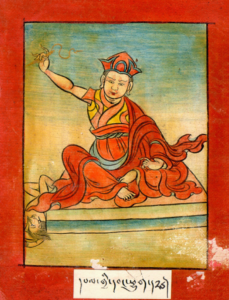
$34.95 - Paperback
By: Gyalwa Changchub & Namkhai Nyingpo & Padmakara Translation Group
The Treasury of Knowledge: Books Two, Three, and Four
$49.95 - Hardcover
Langdro Konchok Jungne Reader's Guide

Langdro Konchok Jungne, also known as Langdro Lotsawa, was another of the twenty-five main disciples of Guru Rinpoche and was minister in the court of King Trisong Deutsen.
As Arthur Mandelbaum relates on his short profile on the Treasury of Lives site:
According to legend, as a result of his practice he could send lightning bolts like shooting arrows wherever he liked. He is said to have liberated both humans and non-humans, and that at his death he manifested as an expanse of light and left no body behind.
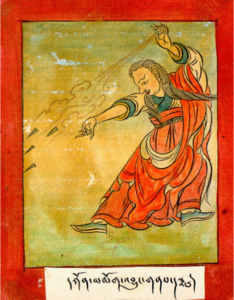
In Lady of the Lotus-Born, we hear how Guru Rinpoche "gave the Chinlap Lamai Druplung and the sadhanas of Tamdrin Sangwa Kundu and Tanak Trekpa, telling them to practice in the caves of Yeru Shang ". The book also relates how, when it was time for the disciples to show signs of accomplishment, Langdro Konchok Jungne "brought down thirteen thunderbolts and aimed and shot them as if they were arrows ".
In Sky Dancer: The Secret Life and Songs of the Lady Yeshe Tsogyel, he is discussed in several places including the time where Guru Rinpoche instructs him on several specific practices.
In Naked Awareness, Karma Chagme relates the circumstances of Langdro Konchok Jungne's liberation. "Guru Rinpoche said to him "The mind-itself is substantial and originally pristine. It is empty of inherent nature and is without modification. Rest in the state without an object of meditation or a meditator. From that alone, the result of spiritual awakening is achieved'. Thus he was liberated ".
Langdro Konchok Jungne's subsequent lives echo through the centuries.
In Enthronement, Jamgon Kongtrul identifies Ratna Lingpa as his reincarnation and this is confirmed testified in many other sources as well.
In Sacred Ground, Jamgon Kongtrul relates how his contemporary, Ontrul Rinpoche of Phalpung monastery, was the emanation of Langdro Konchok Jungne.
In The Life of Shabkar, Shabkar identifies one of his teachers, Ngawang Lobsang Tendzin Rinpoche, as an emanation of Langdro Konchok Jungne as well.
In Dudjom Rinpoche's biography, The Light of Fearless and Indestructible Wisdom, the 17th century terton Longsal Nyingpo is also said to be Langro Lotsawa's emanation. And Dudjom Rinpoche's teacher, Dudjom Namkhai Dorje is identified as the reincarnation of Langdro Konchok Jungne.
Furthermore, in The Ruby Rosary Kyabje Thinley Norbu Rinpoche offers a commentary on a short prayer written by his father H.H. Dudjom Rinpoche illuminating the lives of great yogis, scholars, and masters of the Buddhist lineage in addition to describing the early spread of Buddhism in Tibet beginning with the direct disciples of Guru Rinpoche such as Langdro Konchok Jungne.
$34.95 - Paperback
By: Gyalwa Changchub & Namkhai Nyingpo & Padmakara Translation Group
Light of Fearless Indestructible Wisdom
$34.95 - Paperback
By: Dudjom Rinpoche & Khenpo Tsewang Dongyal Rinpoche & Khenpo Tsewang Dongyal
SNOW LION NEWSLETTER ARCHIVE
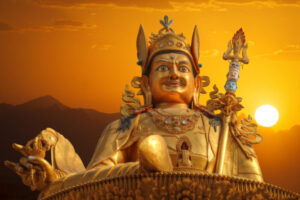
Guru Rinpoche: His Life and Times
| The following article is from the Spring, 2002 issue of the Snow Lion Newsletter and is for historical reference only. You can see this in context of the original newsletter here. |
See also our Reader's Guide to Guru Rinpoche Padmasmbhava with a full list of resources.
Guru Rinpoche: His Life and Times
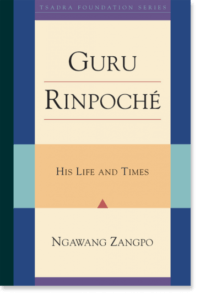
by Ngawang Zangpo
About this Book
To Tibetan Buddhists Guru Rinpoche is a Buddha. In 763, Tibet's powerful armies overran the capital of China and installed a puppet emperor. Why didn't Tibet continue its aggressive military campaigns? This transformation was due to Guru Rinpoche who tamed and converted Tibet to Buddhism and thereby changed the course of Asian history.
This book recounts Guru Rinpoche's historical visit to Tibet and explains his continuing significance to Buddhists. Four very different Tibetan accounts of his story are presented:
Buddhist accounts:
A Biography of Guru Rinpoche by Jamgon Kongtrul
The Immaculate While Lotus by Yeshe Tsogyal
One according to the pre-Buddhist Tibetan religion, Bon:
The Bon Version of the Life of Guru Rinpoche by Jamyang Khyentse Wangpo
One based on Indian and early Tibetan historical documents:
The Indian Version of the Life of Guru Rinpoche by Taranata.
In addition, there are supplications by Guru Rinpoche and visualizations to accompany them by Jamgon Kongtrul.
Praise for Guru Rinpoche: His Life and Times
"The presence of Guru Rinpoche, a figure so important to Tibetan Buddhists he is called simply 'The Precious Master', can be felt still in each of these liberating stories translated here. Read side-by-side, they reveal an even wider picture, deftly highlighted by Ngawang Zangpo's introduction, of how history and culture interact with the inner spirituality that is beyond time and place."— Sarah Harding, author of Creation and Completion
"With a thought-provoking introduction and stimulating cultural, religious, and literary insights, Ngawang Zangpo offers welcome translations of four biographies of Gum Rinpoche and a set of famous supplications. This new work will certainly be enjoyed by everyone interested in the vast spiritual legacy of the Second Buddha' in Tibet." —Cyrus Stearns, author of Buddha from Dolpo
Ngawang Zangpo (Hugh Thompson) lives near Santa Cruz, California. His previous works include Sacred Ground: Jamgon Kongtrul on Pilgrimage and Sacred Geography.
Persons who cannot force themselves to board an airplane cannot fly; people who cannot accept a relationship based on faith and devotion cannot practice tantra.
Excerpt From Guru Rinpoche: His Life and Times
Non-Tibetans can now meet Guru Rinpoche, but the encounter can only be meaningful with faith. Our faith and devotion provide the only access possible to the timeless, ever-present Guru Rinpoche, and this faith and devotion must begin in relation to a human spiritual master and a lineage. For some people this is an impossible task, which should not be a problem unless they imagine they want to practice tantra. Persons who cannot force themselves to board an airplane cannot fly; people who cannot accept a relationship based on faith and devotion cannot practice tantra. Dzongsar Jamyang Khyentse Rinpoche writes in the same book:
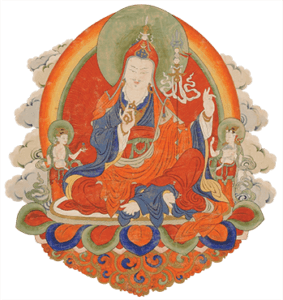
The purpose of Dharma practice is to attain enlightenment. Actually, attaining enlightenment is exactly the same as ridding ourselves of ignorance, and the root of ignorance is the ego. Whichever path we take, whether it's the long and disciplined route, or the short and wild one, at the end of it the essential point is that we eliminate ego.
There are many, many different ways we can do this, for example through Shamatha [tranquility] meditation, and they all work to one extent or another. However, since we have been with our ego for so many lifetimes and we are so familiar with it, every time we take to a path in our efforts to eliminate ego, that very path is hijacked by ego and manipulated in such a way that rather than crushing our ego, our path only helps to reinforce it.
That is the reason why, in the Vajrayana, guru devotion, or Guru Yoga, is taught as a vital and essential practice. As the guru is a living, breathing human being, he or she is able to deal directly with your ego. Reading a book about how to eliminate ego may be interesting, but you will never be in awe of a book, and anyway, books are entirely open to your interpretation. A book cannot talk or react to you, whereas the guru can and will stir up your ego so that eventually it will be eliminated altogether. Whether this is achieved wrathfully or gently doesn't matter, but in the end this is what the guru is there to do, and this is why guru devotion is so important.
I believe that all tantric Buddhists should be as frank as this master about their path and what sets it apart from the other Buddhist paths: faith and devotion to the spiritual master. In Sanskrit they say, "Guru Yoga;" in English we might say, "communion with the spiritual master's mind." Tantra takes pride in its plethora of practices: it aims to answer everyone's needs with easy, accessible, and efficient ways to enlightenment. Yet every single one of those skillful means depends on the spiritual master, a human being from whom we receive transmission of empowerment, the lineage, and guidance; and, after we receive instruction, our success or failure depends not on our diligence, not on our goodness, and not on our intelligence, but on our faith and devotion to our spiritual master.
Tantra cannot be all things to all people. Some of us have serious issues with a relationship grounded in the intense devotion tantra demands. It is in no way a judgment of those individuals or of tantra to say that they were not made for one another. Tantra is not to everyone's taste, nor can it ever be made to be.
"...attaining enlightenment is exactly the same as ridding ourselves of I ignorance, and the root of ignorance is the ego. Whichever path we take, whether it's the long and disciplined route, or the short and wild one, at the end of it the essential point is that we eliminate ego."
Guru Rinpoche is for most Himalayan Buddhists the second Buddha, the Buddha of every form and teaching of enlightenment, with an accent on the tantras. Just as the Great Way teaches us to identify our enlightened nature and call it buddha-nature, tantra teaches us to first see our teachers as Guru Rinpoche. Then we see all phenomena as Guru Rinpoche, down to every atom of our own body, every atom of all beings equally, and every atom of every blade of grass, every grain of sand. Finally, when we recognize our own innate, timeless awareness, it as well is none other than Guru Rinpoche.
Dzongsar Jamyang Khyentse Rinpoche writes:
The first stage of guru devotion, then, is to awaken and enhance our devotion, until it becomes sound and strong and we can actually look upon the guru as the Buddha.
Gradually we will reach the second stage, where we don't simply think the guru is the Buddha, we see he is the Buddha. As our devotion becomes stronger still, it is with a growing sense of joy that we begin to rely entirely on the guru for everything. An inner confidence arises, an absolute certainty that the guru is the only source of refuge. No longer do we have to create or fabricate our devotion now it comes quite naturally.
Then, all our experiences, good or bad, are manifestations of the guru. Everything we experience in life becomes beneficial and has a purpose; everything we encounter becomes a teaching. Total trust and devotion for the guru is born within our heart, and the blessing of the guru dissolves into our mind.
With this, we reach the third stage, which is when we realize that our mind is none other than the guru whom we have seen as the Buddha.
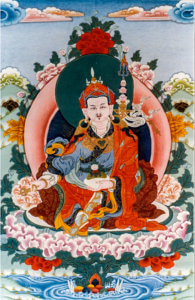
This Guru Rinpoche, while timeless, is introduced to us thanks to a lineage of masters who have passed on their wisdom in an uninterrupted stream to the present. In the preface to Masters of Meditation and Miracles, Tulku Thondup makes a statement that should be repeated in every Tibetan translation:
It was improper and indeed impossible for me to try to avoid the typical characteristic of Tibetan biographies, namely the inclusion of endless lists of teachers, teachings, and disciples of the masters, even though those lists might be boring for readers who are not Tibetan.
He then traces the lineages from Guru Rinpoche and other great masters down to the present, each an essential link. Each deserves to be honored by our attention. How many of us learned (or still learn?) the names of members of sports teams, or of rock bands, or of political parties, during their fleeting moments of fame and fortune? We definitely have the capacity to learn the names and personal histories of the enlightened individuals who have contributed to the wisdom bridge that reaches us.
The members of lineages from Guru Rinpoche should not be faceless, nameless persons: they have kept real and alive what is most important to us the full presence and blessing of Guru Rinpoche.
Lineages of wisdom have been compared to electricity that flows from a power plant to one's home: If the flow is interrupted or faulty at any point, the flow of electricity will stop. The members of lineages from Guru Rinpoche should not be faceless, nameless persons: they have kept real and alive what is most important to us the full presence and blessing of Guru Rinpoche. Different masters reflect the needs of their time on a superficial level, and thus might seem foreign to us, but the wisdom-electricity we receive from our teachers has passed through them and, thanks to them, is exactly the same as it was a thousand years ago.
Guru Rinpoche first appeared as an Indian, a guise that caused his expulsion from Tibet. Yet, with some more reflection over time, Tibetans came to worship Indian spirituality and Indian masters. To the present day, the focus of Tibetan Buddhism remains fixed not upon indigenous Tibetan masters, however impressive they were, but upon non-Tibetans, Buddha Shakyamuni and Guru Rinpoche.
These days, Guru Rinpoche first appeared to us primarily in a Tibetan guise. The Tibetan masters' priceless gift to us has been to introduce foreigners worldwide to Guru Rinpoche's timeless wisdom in such ways as to make it comprehensible, attractive, and accessible. They have had to confront in their new students many non-conducive attitudes, such as distrust, self-seriousness and solemnity, but they disarmed and relaxed us with their light humor, gentle warmth, and sincere concern (or love, to be more precise). Not only did they bring Guru Rinpoche into our lives, they made it seem that the most natural, clear-headed, and light-hearted thing to do is to discover eternal Guru Rinpoche within ourselves. What we saw as insurmountably distant proved to be innate, and what intimidated us proved to be child's play.
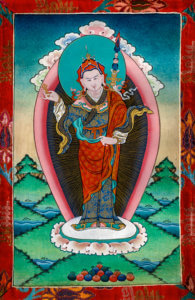
What we saw as insurmountably distant proved to be innate, and what intimidated us proved to be child's play.
Modern spiritual masters of all races now bring Guru Rinpoche to our level, but that is not to say that it would not be wise for us, on our part, to rise to the occasion. If you feel the urge to do yourself an enormous favor, attend any lecture by the Dalai Lama (or so many other tantric masters I could name) when he visits your continent. Or plunge into Journey to Enlightenment, Matthieu Ricard's book on the life of Dilgo Kyentse Rinpoche.
These masters, who introduce us so surely and gently to what has always been our nature, making it seem so familiar and close, provide living proof of the wondrous qualities of that same nature's manifest expression, which surpass all measure and understanding.
Who are these unfathomable beings if they are not Guru Rinpoche?
I cite them because they are persons of living memory, whom we can meet in person or in photographs or in words spoken directly in English, and I mention them because, they present us with a paradox. On the one hand, our recognition of our inner nature must accompany us on a "kitchen-sink level," as Trungpa Rinpoche used to remind us, and yet our inner Guru Rinpoche's positive qualities are what, we call, for lack of better words, inconceivable and inexpressible. These masters, who introduce us so surely and gently to what has always been our nature, making it seem so familiar and close, provide living proof of the wondrous qualities of that same nature's manifest expression, which surpass all measure and understanding.
Ngawang Zangpo (Hugh Leslie Thompson) completed two three-year retreats under the direction of the late Kalu Rinpoche. He is presently working on a number of translation projects that were initiated under the direction of Chadral Rinpoche and Lama Tharchin Rinpoche. He has also contributed to Kalu Rinpoche's translation group's books Myriad Worlds and Buddhist Ethics.
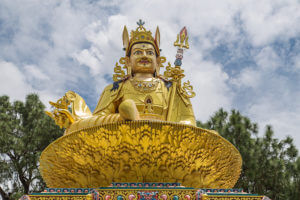
Padmasambhava (eighth century), the Indian meditation master, is the founder of the Nyingma tradition, the oldest Buddhist tradition in Tibet. In addition to introducing the practices of tantric Buddhism to Tibet, he also completed the building of Samye, the first Buddhist monastery in Tibet.
More Books by Ngawang Zangpo
Other Books Related to Guru Rinpoche
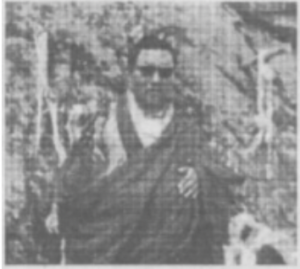
| The following article is from the Spring, 1998 issue of the Snow Lion Newsletter and is for historical reference only. You can see this in context of the original newsletter here. |
Azom Chotrul Paylo Rinpoche and the Legacy of Chimphu
Yarlung Valley, Tibet
In eighth-century Tibet, Buddhism was dawning in the fertile Yarlung Valley, home to Tibet's earliest kings. Teachings whose time was not yet ripe, tradition tells us, were being hidden by the dakini Yeshe Tsogyal. Many of these were instructions she received from Padmasambhava when they did retreat in places to the east, like Terdrom, and above all in the caves of Chimpu above Samyé, where the first monastery of Tibet had just been built.
MANY WONDERFUL IMAGES CAN BE SEEN IN THE ROCKS THERE; THE SCULPTED FORMS OF BUDDHAS AND YOGIS ARE SAID TO HAVE EMERGED SPONTANEOUSLY THROUGH BLESSINGS BROUGHT BY THE GREAT PRACTITIONERS WHO CAME HERE.
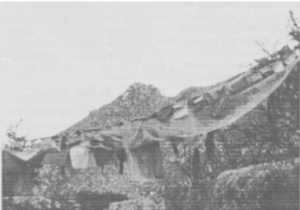
Chimphu is formed around a high narrow valley, crested on three sides by rock formations studded with caves. Since the earliest days of Buddhism in Tibet, if not before, these caves have sheltered meditators in retreat. Many wonderful images can be seen in the rocks there; the sculpted forms of Buddhas and yogis are said to have emerged spontaneously through blessings brought by the great practitioners who came here.
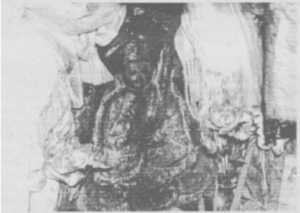
Related Books
The Dakini Heart Essence Teachings
Among other significant events that, according to Nyingma traditions, took place at Chimphu was the sudden death of the King Trisong Deytsen's eight-year-old daughter, Lhacham Pemasel (also known as Princess Pema Sal). As her mother swoons in the arms of Yeshe Tsogyal, Padmasambhava briefly revives the young girl and inscribes on her heart a vermilion letter HRI, telling her stricken parents that because of this she will, many lifetimes from now, come to discover Padmasambhava's own heart essence teachings in a transmission that will become known as the Dakini Heart Essence teachings.
Yeshe Tsogyal is instructed to hide these teachings away so that the Princess' future incarnation will be able to discover them. Until they are discovered, it will be another lineage, the Vimalamitra Heart Essence, which will flourish.
In the 13th century Pema Ledrel Tsel reveals two volumes known as The Dakini Heart Essence, Khadro Nying Tig (Khandro Nyingtig), which include the tale of how this transmission was initially bestowed on the heart of the young princess, his former incarnation.
This transmission is also held by the third Karmapa, Rangjung Dorje, and eventually by the great 14th century adept Longchenpa Rabjam who unifies this transmission with the earlier Heart Essence of Vimalamitra.
When Longchenpa visited Chimphu he declared,
I would rather die here than be born somewhere else.
And after doing retreat and giving teachings, he did die at Chimphu in 1363. One can still visit his stupa there.
THE DAKINIS HOLD THIS TEACHING AS DEAR AS A DROP (ESSENCE) OF BLOOD IN THEIR OWN HEART.
In the 18th century, Jigme Lingpa, also recognized as a reincarnation of the young princess, did a three-year retreat at Chimpu. He spends some of this period in the sleeping cave of Yeshe Tsogyal, travels by vision to the great stupa of Boudha, where with the support of many dakinis he receives through visionary encounter with Longchenpa the lineage now known as The Heart Essence of the Vast Expanse, Longchen Nying Thig. It gets its name, Khetsun Sangpo Rinpoche once said,
"...because the dakinis hold this teaching as dear as a drop (essence) of blood in their own heart."
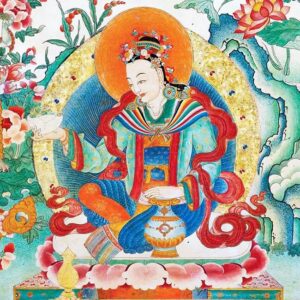
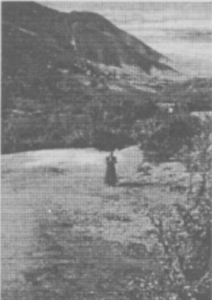
The Beginning of my Practice
I began practice in this lineage under Khetsun Sangpo Rinpoche in 1974. As I was led, over the next two and half decades, through the stream of practices in this transmission, I began to plan a pilgrimage to Tibet that would center on places sacred to Yeshe Tsogyal, Padmasambhava, and this lineage.
A few months before the pilgrimage began in May of 1996, I woke up from a strong dream of Longchenpa Rabjam and Jigme Lingpa, the first time I had ever dreamt of them. Perhaps it was not too surprising. In conversation with my friend Phyllis Pay, I had been dreaming the trip deeply for nearly a year, exploring various locations that we might visit.
Our trip began in Lhasa, and our first camping excursion was planned for Chimphu, which we approached by way of Samye. On the truck that took us from Samye to Chimphu were a number of nuns from Shugseb, where Khetsun Sangpo Rinpoche had received transmission of the Heart Essence of the Great Expanse from the great female yogini, Ani Lochen.
One young nun was wearing a button with a Lama's face on it. I asked her about it.
"This is a great Lama who is now visiting and giving teachings at Chimphu. We have all come to hear him."
She assured me that we could meet him, and gave directions how to find him.
We pitched our tents on a green carpet of grass by a rushing stream–its waters probably mingling with a spring higher up the mountain said to have emerged during Guru Rinpoche's first teachings there. It rained during the night, leaving a film of radiant snow on the high cliffs above us.
After breakfast, we hiked up the rise behind our meadow. Azom Rinpoche was staying in a small monastery about five hundred feet above where we had camped at Chimphu, and perhaps 800 feet below the sleeping cave of Yeshe Tsogyal.
He was teaching the higher practices contained in the Heart Essence of the Vast Expanse to 250 Tibetans who were practicing in upper Chimphu. These monks and nuns came down every other day for teachings, walking contentedly in twos and threes, chanting a beautifully haunting song, a call to the Lama, that floated through the clear air between the high cliffs before wafting down the valley.
On alternate days newer students, staying in tents on the elevated flat areas near the monastery, received teachings on the foundational practices of the lineage. We eleven were the only non-Tibetans in the area.
We entered his room, eyes dilating after the brilliant light outside. He was attended by two monks and sat energetically at the foot of his wooden bed as he received our offering scarves. We bowed down and introduced ourselves. After mentioning the various connections each of us had with practice, I asked whether we might receive instructions on the mind-nature from him.
These are especially precious teachings, usually given to relatively practiced students and potentially precipitating a significant turning point in understanding. His response was immediate:
"Shall I speak to the whole group at once or to each of you individually?"
"One by one please," we asked.
"Yes, that's best," he said, "because everyone is different. How could I say the same thing to all of you?"
And so we began. My friend Michele Martin and I translated. This meant that, in addition to receiving our own teachings, we were able to see him work with the other women.
He usually began by asking a question, and would respond to the answers in ways that led each person gently and quite directly, by a route unique to her situation, to the essence he wished to impart. He often closed by giving instructions on a simple meditation practice that he felt addressed the person's situation and invited her to return next day for further instructions.
OUR ENCOUNTER AT CHIMPHU PROMISES NOW TO FLOWER INTO A WONDERFUL OPPORTUNITY TO SUPPORT HIS VITAL ACTIVITIES IN TIBET AND TO ALLOW WESTERN PRACTITIONERS TO MAKE A CONNECTION WITH HIM AND THE ANCIENT TRANSMISSIONS HE HOLDS.
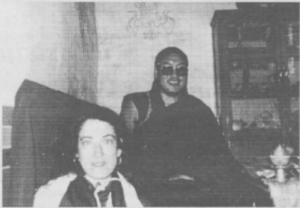
Azom Rinpoche's Previous Incarnations
Before the individual sessions began, however, and in response to our own introductions, Azom Rinpoche had also been introduced. His attendants took it upon themselves to read to us from an ornately phrased English biography which stated that three days after his birth Azom Rinpoche began to speak in so loving a manner that people were left in joy and astonishment, and at the age of one year he was recognized by the Abbot of Azom Monastery as an incarnation of Gyalsey Pema Wangyal, son of the previous Azom Rinpoche.
The attendant then proceeded to read a short list of the other various personages incarnated in him. One is Trisong Daytsen, father of the young Princess who died at Chimphu. Another, the monk continued, was none other than Jigmay Lingpa.
Azom Rinpoche began his studies at the age of five. Clearly an extraordinary prodigy, he undertook full time retreat at eleven, began teaching at thirteen, and now at age of twenty-six has 10,000 Tibetan and Chinese followers.
He is widely renowned for having left hand prints in rock in Kham, and has been photographed before a wooden staff he inserted into rock after a powerful ceremony.
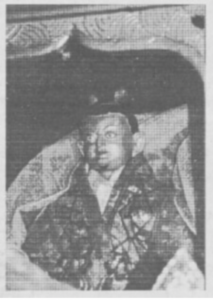
Restoring Tibet's Retreat Centers
He came to central Tibet in order to restore important retreat centers destroyed during the Cultural Revolution.
In particular, he has commenced the rebuilding of Zha Lhakang on the border or Kham and Central Tibet. This was originally built only 35 years after Samye, Tibet's first monastery, and was famously rebuilt by Longchen Rabjam in the fourteenth century. In 1997, Azom Rinpoche commenced rebuilding Zha Lhakang on the anniversary of Longchen Rabjam's reconstruction. This place is considered very important because it is said to act as a barrier, protecting the Dharma of Tibet.
In addition to this work, Azom Rinpoche supports several thousand monks and nuns. He asked me to help him raise money for these worthy projects, and after much thought it seemed best to invite him to this country so that people here could benefit from his powerful teachings, and also so that he could gather funds for his important work.
As a result of our fortuitous meeting, Dawn Mountain Tibetan Temple in Houston organized the first U.S. visit of Azom Rinpoche.
Certainly, our encounter at Chimphu promises now to flower into a wonderful opportunity to support his vital activities in Tibet and to allow Western practitioners to make a connection with him and the ancient transmissions he holds.

For more information go to Dzogchen Cycles Adzom Lineage
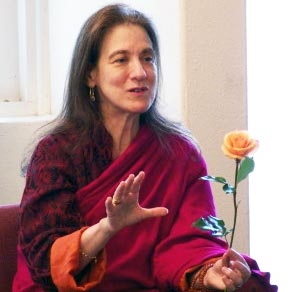
Anne C. Klein is professor and chair of Religious Studies at Rice University. She is also a founding director and resident teacher of Dawn Mountain, a center for contemplative study and practice in Houston. Her publications include Path to the Middle (SUNY Press), Unbounded Wholeness, coauthored with Geshe Tenzin Wangyal Rinpoche (Oxford University Press), and Knowledge and Liberation (Snow Lion Publications).
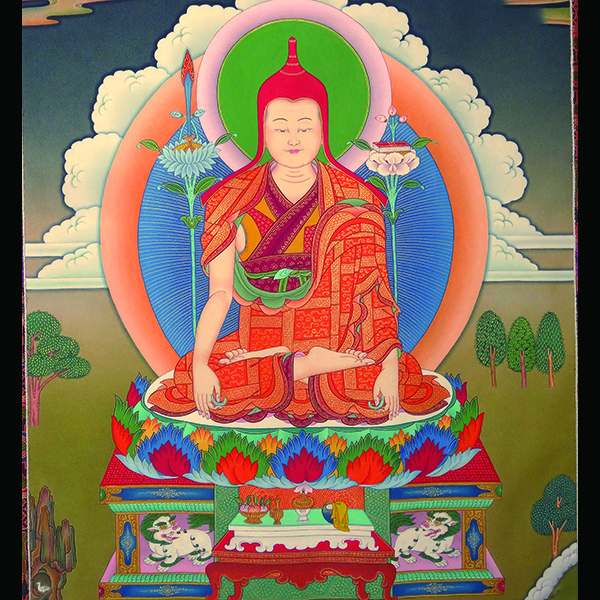
Longchen Rabjam (1308–1363), also known as Longchenpa, is a great luminary of Tibetan Buddhism. He was highly skilled in all aspects of scholarship from an early age and excelled throughout his life in the practice and accomplishment of the Dharma. Regarded as a great Dzogchen master, Longchenpa had many pure visions where he was given direct instructions from Guru Padmasambhava and is recognized as an emanation of Vimalamitra. Longchenpa’s prolific writings have made him one of Tibet’s most renowned and precious teachers.
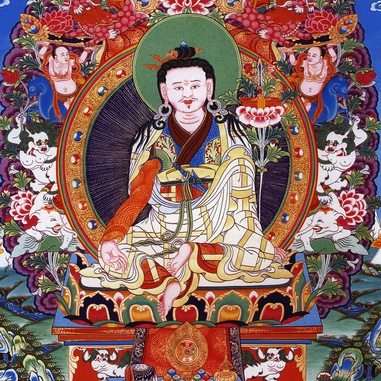
Rigdzin Jigme Lingpa (1730–1798) was a great master of the Nyingma tradition of Tibetan Buddhism. The root of the Khyentse lineage, he was a tertön, or discoverer of treasure teachings, and revealed the Longchen Nyingtik, one of the most important cycles of meditative practice in the Nyingma school.
Khetsun Sangpo (1921–2009) was born in central Tibet and worked in a monastery as a servant when he was a boy, learning to read and write during his free hours. He later pursued study for several years with a renowned nun. (It was unusual for a man to seek teachings from a woman.) He eventually pursued formal monastic education in both the Gelukpa and Nyingma traditions. He fled Tibet to India in 1959. He had a close relationship with Dudjom Rinpoche, who asked him to teach in Japan for ten years as his representative. After that period, he spent the rest of his life in India and Nepal.
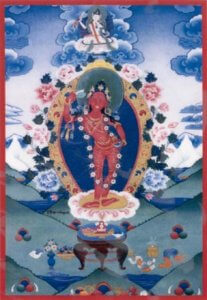
Dechen Gyalmo, Queen of Great Bliss and the Nuns of Sangchen Mingye Ling
| The following article is from the Spring, 1989 issue of the Snow Lion Newsletter and is for historical reference only. You can see this in context of the original newsletter here. |
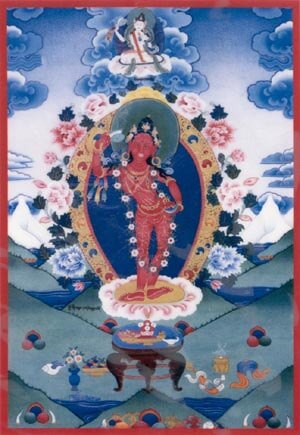
In her human form Yeshe Tsogyal is depicted as being white in color and in union with Padmasabhava. In her deified form, as Dechen Gyalmo, she is visualized red in color, standing alone, and devoid of clothing save jewelry made of flowers, pearls, and bone. As such she represents the blissful (female) quality of the enlightened mind that arises in conjunction with the empty (male) aspect of enlightenment.
Enlightened beings are said to emanate in three forms (kayas) in order to benefit beings of various levels of consciousness. The most subtle form is the pure, empty state of enlightenment, the Dharmakaya. From that state an enlightened being may emanate in the Sambogakaya form, embodying the radiant, energetic quality that naturally arises out of emptiness. In order to appear in a tangible form that most beings of ordinary consciousness can readily perceive, emanations often appear in the substantial state of the Nirmanakaya form.
Both Yeshe Tsogyal and Dechen Gyalmo are said to be Nirmanakaya emanations of Kuntuzangmo, the primordial female Buddha (Dharmakaya). In the practice found on a recording, by the anis of Sangchen Mingye Ling, a terma of Jigme Lingpa, founder of the Longchen Nying Thig school, the Sambogakaya level of the deity appears as Dorje Phagmo, a red, semi-wrathful female with a sow's heads emerging from the back of her neck, visualized as the wisdom deity existing in Dechen Gyalmo's heart. All these emanations are regarded as both the mother (or generative state) as well as consort (or coemergent state) of all Buddhas. Additionally, in this practice, the one hundred peaceful and wrathful deities said to appear to one in the bardo state after death are visualized at specific points within Dechen Gyalmo's body.
Within the Longchen Nying Thig lineage individual monasteries developed slight variations regarding melodic material, hand gestures (mudras), and the inclusion of auxiliary prayers. The form of the Dechen Gyalmo Puja found on this recording is in the tradition of Tso Patrul Rimpoche, an early twentieth-century lama residing in Eastern Tibet.
The Chod Ritual is a purification practice performed by many of the Vajrayana lineages. Designed to undercut attachment to the physical body, the ritual involves the visualization of the wrathful goddess, Tro-ma, who decapitates the practitioner, then offers a nectar made from the body to friends and enemies. Usually performed at night, often in desolate places such as cemeteries, Chod is not necessarily linked to the Dechen Gyalmo Puja. However on the particular date of recording, this version of the Longchen Nying Thig Chod Ritual was performed as a finale to the puja.
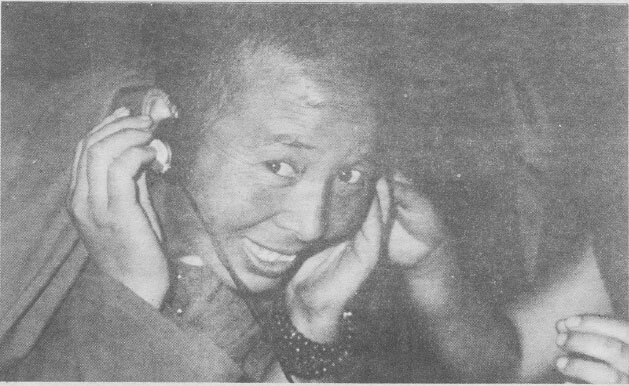
Dating back to the establishment of Tantric Buddhism, when Yeshe Tsogyal become holder of Padmasambhava's lineage of teachings, women practitioners have been regarded as spiritual and intellectual equals of their male counterparts. As yogic consorts women have been considered essential members of their religious communities.
However, the overlay of traditional socio-economic values dictated that the majority of Tibetan women take on the role of servile homemakers. Prior to the Chinese Revolution, most Tibetan women were neither provided with an opportunity for literacy nor sufficient time for serious practice. Even today, despite some efforts towards feminization, especially in the area of education, many Tibetans retain their age-old customs. Women are commonly observed herding yaks, preparing fields, lugging huge, wooden buckets strapped to their backs, and preparing meals over fires fueled by patties fashioned by hand from yak dung and straw. Older children are left to their own devices and young infants tucked into the folds of loose-fitting robes so that any snatches of spare time may be spent circumambulating holy places.
Should a Tibetan woman have a desire to focus more seriously on Buddhist practice, her most culturally acceptable venue is to take the vows of nunhood.
The anis of Sangchen Mingye Ling are a group of women who have made this choice. They are headed by a small number of older nuns who, prior to the Cultural Revolution, were students of the yogi and scholar, Tso Patrul Rimpoche. During the Cultural Revolution these women externally took on low profile life-styles, some marrying and having children, but secretly retained their passion for Dharma. With the recent return of more liberalized attitudes toward ethnic culture and religious practice in the People's Republic, the older anis were able to renew their vows. In addition a number of younger women have become attached to their group; currently there are approximately forty anis in all, ranging in age from early teens to their late eighties. The oldest and most revered of the elder generation passed away in 1986, demonstrating signs of full realization at her death.
Attired in traditional fushia and maroon robes, the anis reside together in small adobe houses resembling those of the Southwest Indians. Their homes are also used as places of worship and retreat. Falling outside the usual means of support, as they are neither members of nuclear families nor government employees, these women live a very minimal existence, relying on what family members have to offer, and are often reduced to taking odd jobs in the community. It is not unusual to see a small group of anis walking down a street loaded with piles of hay the size of two bales on their backs. In addition to regular Nyingma practices, the anis, in part as a way of cutting food costs, frequently perform the strenuous Nyung Nye practices, which limit food intake to one meal every two days. Yet even with these hardships the anis of Sangchen Mingye Ling are jubilant in their devotion, a devotion movingly expressed in this recording made of their practices. Available on cassette from Snow Lion.
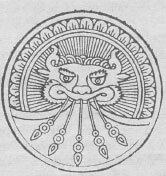
The Life and Visions of Yeshe Tsogyal
$24.95 - Paperback
By: Chonyi Drolma & Dzongsar Jamyang Khyentse & Drime Kunga & Yeshe Tsogyal
$34.95 - Paperback
By: Gyalwa Changchub & Namkhai Nyingpo & Padmakara Translation Group

